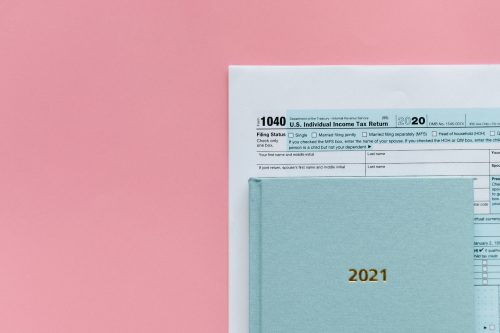- The standard deduction is a set amount taxpayers can deduct from earned income on their taxes.
- Standard deduction figures are determined by the IRS based on the taxpayer’s filing status and the tax year.
- Depending on your own financial situation, you may opt to take a standard deduction or an itemized deduction on your tax return.
For tax purposes, a standard deduction is the dollar amount that taxpayers can deduct from their income before income taxes are applied. The Internal Revenue Service (IRS) permits taxpayers to deduct this amount from their taxable income in lieu of having to itemize deductions.
Although the standard deduction seeks to simplify some of the complexities of your tax returns, a host of factors should be considered before choosing between deductions. The standard deductions for 2022 and 2023 are different, and your eligibility to take the standard deduction depends on factors unique to your finances.
How standard deductions work
The standard tax deduction provides taxpayers a specific dollar amount of income they can subtract from their earned income on their federal tax return.
By using the standard deductions, a taxpayer could fall into a lower tax bracket and thus have a lower tax liability at the end of the year. You may drop into a lower tax bracket, depending on how much the standard deduction reduces your adjusted gross income (AGI). This can translate into a lower income tax percentage on your return, potentially reducing the amount you pay when you calculate taxable income.
Your tax bill is determined by your tax rate, tax credits and other factors that will affect how much you owe. Bear in mind that standard deductions apply to the given tax year, not the filing year.
Standard deduction vs. itemized deduction
It’s important to understand the difference between a standard deduction and an itemized deduction, so you can make the best choice for your own financial situation.
A standard deduction is the set amount determined by the IRS for qualifying taxpayers in the given tax year, based on your filing status. Conversely, for itemized deductions, you have to list out what you spend on your tax returns. This figure is wholly based on your own spending.
Many filers choose the standard deduction, but others may opt for an itemized deduction and send in a Schedule A IRS form alongside their Form 1040 or 1040-SR. The decision to proceed with standard versus itemized deductions should be made after evaluating your situation with a financial professional.
What is the standard deduction for 2022 and 2023?
Standard deductions vary depending on your filing status, meaning married couples, single filers and qualifying widows each have their own deduction for income tax purposes. The table below breaks down deductions by filing status and tax year (2022 and 2023), according to the IRS.
| Filing Status | Tax Year 2022 | Tax Year 2023 |
| Individual/single | $12,950 | $13,850 |
| Married, filing jointly | $25,900 | $27,700 |
| Married, filing separately | $12,950 | $13,850 |
| Head of household | $19,400 | $20,800 |
| Surviving spouses | $25,900 | $27,700 |
Deductions differ depending on marital status, how you decide to file (if married or as head of household) or if you’re a qualifying surviving spouse.
Additional standard deductions
Different standard deductions on your federal income tax depend on age and vision too. Those who are 65-plus years old or blind and are married or a surviving spouse may be eligible for an additional standard deduction of $1,400 (for 2022 taxes) and $1,500 (for 2023 taxes). Those who are 65 or older and are unmarried, and aren’t a surviving spouse, may be eligible for a standard deduction of $1,750 (2022 taxes) and $1,850 (2023 taxes).
Standard deductions for dependents
The standard deduction for dependents in tax year 2022 is limited to either $1,150 or the dependent’s earned income plus an additional $400, whichever figure is greater. For tax year 2023, that changes to $1,250 or the dependent’s earned income plus $400. Dependents who earn more than certain financial limits are also responsible for submitting their own tax filing with the IRS, although you may still be able to claim them on your tax return.
Final thoughts
When deciding between standard deductions or itemized deductions, consider your personal finances. You may prefer a standard deduction if your taxes are straightforward.
If you had large uninsured medical or dental expenses; paid mortgage interest or real property taxes on your home; or made large contributions to qualified charities during the tax year, you may consider itemizing, as the standard deduction curtails your ability to deduct against these costs.
When in doubt, reach out to a financial expert for an in-depth review of your financial goals, so you can be prepared for tax season.










